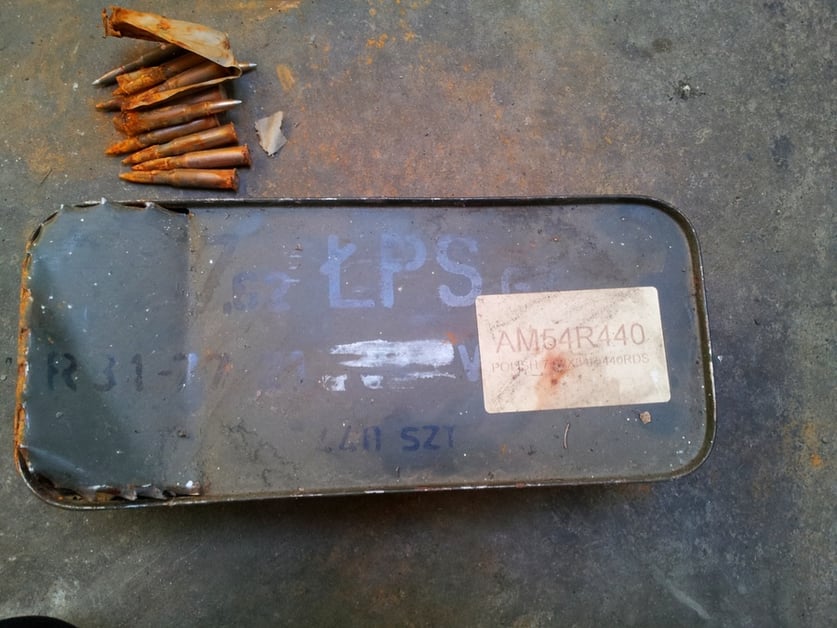3 Ways to Preserve and Protect Ammunition
A common question is, “does ammo have a shelf life?”
Contrary to popular belief – it does. While modern munitions are built to outlive the people who purchased them, it doesn’t mean that upper limit can’t be reached. In this article, we’ll talk about several misconceptions about modern ammunition shelf life and recommend ways to improve it.
Lead Degradation
For full metal jackets and bullets lined with brass, this is almost a negligible issue. For bullets with exposed lead, there is some risk associated with lead being exposed to oxygen over a long period of time and then being inhaled. That period of time? A long one. While there isn’t much in the way of definitive timelines set, it basically comes down to the perfect combination of:
1. Humidity
The more humid an environment the rounds are exposed to on a regular basis can help determine the available water that lead has to cling to before being evaporated into the air.
TIP 1: Wood boxes actually work wonders in terms of absorbing excess humidity. Sawdust is also a great medium to store excess rounds inside a sealed container because it absorbs ambient water vapor very well.
2. Temperature
The evaporation rate of water or just the movement of gas is all regulated, at least in part, by temperature. The hotter the temperature, the more that exposed lead will interact with air.
3. Confinement
The availability of air is a major determination in how much it can interact with the exposed lead on the bullets.
TIP 2: Kept ammo in a container with no open air access (i.e. an ammo can, sealed container, etc.). This greatly reduces the effects of the previous two factors mentioned.
Primer Shelf Life for Ammunition
In comparison to the olden days where black powder was used as the primary propellant for the shell, modern day ammunition is produced with smokeless powder primers. These primers – when not exposed to ammonia or corrosive agents – can effectively last for quite some time.
NOTE: A general definition of modern ammunition is any ammunition produced with smokeless powder after the 1930s. So, those old Soviet-era 7.62x54R rounds are probably still good if they’re in a sealed container.
The specific chemical composition of smokeless powder may vary depending on the manufacturer but generally it will always include nitroglycerine (primary charge for TNT) and nitrocellulose.
The best way to keep munition primers viable is to either pack the rounds in sawdust or simply follow good ammunition storing procedures. We’ve included those below for convenience.
“How do I know when my ammunition primers are no good anymore?”
A big sign – a bad sign – is when you see either a violet or scarlet colored gas coming from the canister. The primers have corroded to the point where the nitrogen-based compounds are exposed to the air and have begun to degrade. That means they’re no good. And those fumes? Certainly hazardous. But unless you’re popping open an old rusty ammo can buried in a partially exposed creek bed, this shouldn’t normally happen.
Ammunition Storage and Use Considerations

Will it fire?! The primers look good. The casings, on the other hand – a bit suspect.
Hopefully, we covered a range of different factors responsible for ammunition shelf life. In general, ammunition stands the best shot of being preserved for the long run if it is stored in a sealed container and kept in a cool, dark, arid environment.
TIP 3: Store ammunition in a cool, dark, arid environment.
For those stacking larger amounts of surplus ammunition for a rainy day, just remember that every time you open those canisters to do an ammo count, those rounds are exposed to air and humidity. While this won’t likely be a major factor in ammo degradation, it’s a consideration to ensure that ammo is promptly put back into a dark, dry, and sealed environment.




![[VIDEO] The Happiest Place On Earth Can’t Save You From Violence](https://imagedelivery.net/sbm_lYeJbALkepJgtmRD5w/concealednation.org/2019/07/ScreenHunter_2467-Jul.-09-12.43.jpg/w=728,h=381)









![[VIDEO] Ultimate Glock Meltdown](https://imagedelivery.net/sbm_lYeJbALkepJgtmRD5w/concealednation.org/2015/08/ScreenHunter_121-Aug.-08-20.01.jpg/w=728,h=381)